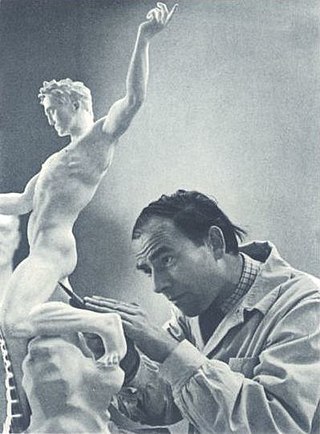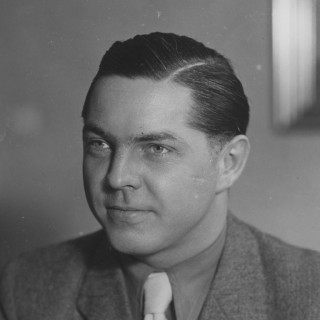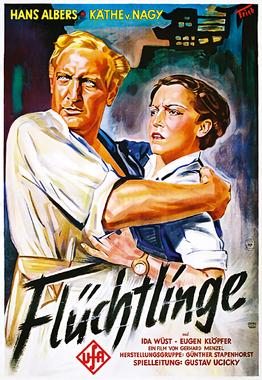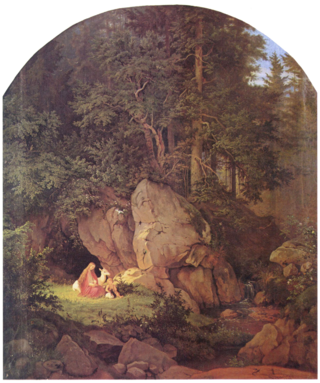Related Research Articles

Alfred Ernst Rosenberg was a Baltic German Nazi theorist and ideologue. Rosenberg was first introduced to Adolf Hitler by Dietrich Eckart and he held several important posts in the Nazi government. He was the head of the NSDAP Office of Foreign Affairs during the entire rule of Nazi Germany (1933–1945), and led Amt Rosenberg, an official Nazi body for cultural policy and surveillance, between 1934 and 1945. During World War II, Rosenberg was the head of the Reich Ministry for the Occupied Eastern Territories (1941–1945). After the war, he was convicted of crimes against peace; planning, initiating and waging wars of aggression; war crimes; and crimes against humanity at the Nuremberg trials in 1946. He was sentenced to death by hanging and executed on 16 October 1946.

The Thule Society, originally the Studiengruppe für germanisches Altertum, was a German occultist and Völkisch group founded in Munich shortly after World War I, named after a mythical northern country in Greek legend. The society is notable chiefly as the organization that sponsored the Deutsche Arbeiterpartei, which was later reorganized by Adolf Hitler into the National Socialist German Workers' Party. According to Hitler biographer Ian Kershaw, the organization's "membership list ... reads like a Who's Who of early Nazi sympathizers and leading figures in Munich", including Rudolf Hess, Alfred Rosenberg, Hans Frank, Julius Lehmann, Gottfried Feder, Dietrich Eckart, and Karl Harrer.

Arno Breker was a German sculptor who is best known for his public works in Nazi Germany, where they were endorsed by the authorities as the antithesis of degenerate art. He was made official state sculptor, and exempted from military service. One of his better known statues is Die Partei, representing the spirit of the Nazi Party that flanked one side of the carriage entrance to Albert Speer's new Reich Chancellery.

Nazism made extensive use of the cinema throughout its history. Though it was a relatively new technology, the Nazi Party established a film department soon after it rose to power in Germany. Both Adolf Hitler and his propaganda minister, Joseph Goebbels, used the many Nazi films to promote the party ideology and show their influence in the burgeoning art form, which was an object of personal fascination for Hitler. The Nazis valued film as a propaganda instrument of enormous power, courting the masses by means of slogans that were aimed directly at the instincts and emotions of the people. The Department of Film also used the economic power of German moviegoers to influence the international film market. This resulted in almost all Hollywood producers censoring films critical of Nazism during the 1930s, as well as showing news shorts produced by the Nazis in American theaters.

Fritz Hippler was a German filmmaker who ran the film department in the Propaganda Ministry of Nazi Germany, under Joseph Goebbels. He is best known as the director of the propaganda film Der Ewige Jude .
An enchanted forest is a forest under or containing magical enchantments.
Franz Eher Nachfolger GmbH was the central publishing house of the Nazi Party and one of the largest book and periodical firms during the Nazi regime. It was acquired by the party on 17 December 1920 for 115,000 Papiermark.

Refugees is the 1933 German drama film, directed by Gustav Ucicky and starring Hans Albers, Käthe von Nagy, and Eugen Klöpfer. It depicts Volga German refugees persecuted by the Bolsheviks on the Sino-Russian border in Manchuria in 1928.

Hans Westmar was the last of an unofficial trilogy of films produced by the Nazis shortly after coming to power in January 1933, celebrating their Kampfzeit – the history of their period in opposition, struggling to gain power. The film is a partially fictionalized biography of the Nazi martyr Horst Wessel.

Max Halbe was a German dramatist and main exponent of Naturalism.
Unternehmen Michael is a 1937 German film directed by Karl Ritter, the first of three films about the First World War which he made during the period when the Third Reich was rearming.

The Militant League for German Culture, was a nationalistic anti-Semitic political society during the Weimar Republic and the Nazi era. It was founded in 1928 as the Nationalsozialistische Gesellschaft für deutsche Kultur by Nazi ideologue Alfred Rosenberg and remained under his leadership until it was reorganized and renamed to the National Socialist Culture Community in 1934.
Wolfgang Zeller was a German composer noted for his complex film music.
Paul Hatschek was a Czech engineer of optical and film technology and a member of the German Resistance against Nazism during the Third Reich. He was involved with Robert Uhrig and then became a leading member of the resistance group, the European Union. According to Robert Havemann, Hatschek was under Gestapo surveillance for years. He was arrested in 1943 and subjected to intensive interrogation, resulting in him giving the Nazis numerous names of fellow resistance members. His daughter and his wife were among those arrested. All three were brought before the Volksgerichtshof and sentenced to death. He was executed at Brandenburg-Görden Prison in May 1944; his wife and daughter were executed at Plötzensee Prison, his daughter in May 1944, his wife in December 1944.

Karl Ritter was a German film producer and director responsible for many Nazi propaganda films. He had previously been one of the first German military pilots. He spent most of his later life in Argentina.

Josef “Sepp” Allgeier was a German cinematographer who worked on around fifty features, documentaries and short films. He began his career as a cameraman in 1911 for the Expreß Film Co. of Freiburg im Breisgau. In 1913, he filmed newsreels in the Balkans. He then became an assistant to Arnold Fanck, a leading director of Mountain films. He worked frequently with Luis Trenker and Leni Riefenstahl, both closely associated with the genre. He was Riefenstahl's lead cameraman on her 1935 propaganda film Triumph of the Will. During the Second World War, Allgeier filmed material for newsreels. He later worked in West German television. His son is the cinematographer Hans-Jörg Allgeier.

The German Forest was a phrase used both as a metaphor as well as to describe in exaggerated terms an idyllic landscape in German poems, fairy tales and legends of the early 19th-century Romantic period. Historical and cultural discourses declared it as the symbol of Germanic-German art and culture, or as in the case of Heinrich Heine or Madame de Staël, as a counter-image of French urbanity. It was also used with reference to historical or legendary events in German forests, such as Tacitus' description of the Battle of the Teutoburg Forest or even the nature mysticism of the stylized Germanic national myth, the Nibelungenlied as the history of its multi-faceted reception shows.
Wilhelm Strienz was a German bass operatic singer.

Rainer Kunad was a German conductor and composer, especially of opera.
References
- ↑ Pierre Aycoberry The Nazi Question, p11 Pantheon Books New York 1981
- ↑ Welch 1983, pp. 86.
- ↑ Welch 1983, pp. 88.
- ↑ Welch 1983, pp. 87.
- ↑ Welch 1983, pp. 91.